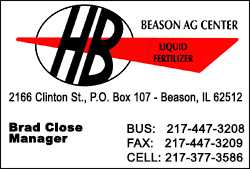|
 High vapor pressure has been identified as a possible factor in
the fireball explosions witnessed after oil train derailments in
Illinois and West Virginia in recent weeks. High vapor pressure has been identified as a possible factor in
the fireball explosions witnessed after oil train derailments in
Illinois and West Virginia in recent weeks.
For over a year, federal officials have warned that crude from North
Dakota's Bakken shale oilfields contains a cocktail of explosive gas
- known in the industry as 'light ends.'
The new rules, which take effect on April 1, aim to contain dangers
by spot-checking the vapor pressure of crude before loading and
capping it at 13.7 pounds per square inch (psi) - about normal
atmospheric conditions.
The plan relies on a widely-used test for measuring pressure at the
wellhead, but safety experts say gas levels can climb inside the
nearly-full tankers, so the checks are a poor indicator of explosion
risks for rail shipments.
It is "well-understood, basic physics" that crude oil will exert
more pressure in a full container than in the test conditions North
Dakota will use, said Dennis Sutton, executive director of the Crude
Oil Quality Association, which studies how to safely handle fossil
fuels.

Ametek Inc, a leading manufacturer of testing equipment, has
detected vapor pressure climbing from about 9 psi to over 30 psi -
more than twice the new limit - while an oil tank is filled to
near-capacity. (Graphic: http://reut.rs/1EHChG4)
About 70 percent of the roughly 1.2 million barrels of oil produced
in North Dakota every day moves by rail to distant refineries and
passes through hundreds of cities and towns along the way.
The state controls matter to those communities because there is no
federal standard to curb explosive gases in oil trains.
North Dakota officials point out that the pressure limit is more
stringent than the industry-accepted definition of "stable" crude
oil. They also say that they lack jurisdiction over tank cars
leaving the state and that the pressure tests are just one of the
measures to make oil trains safer.
"We're trying to achieve a set of operating practices that generates
a safe, reliable crude oil," Lynn Helms, director of the North
Dakota Department of Mineral Resources, has said. Helms has also
said that test readings for near-full containers were less reliable.
However, given different testing and transport conditions, industry
officials say the pressure threshold may need to be lowered to
reduce the risks.
Limiting vapor pressure to 13.7 psi in transit would require an
operator to bring it to "something well below that" at the loading
point, Sutton said.
[to top of second column]
|

The uncertainty about regulatory reach and safety has spurred calls
for the White House to develop national standards to control
explosive gas pressure.
"Let me be really clear," Democratic Senator Maria Cantwell of
Washington state told reporters last week. "They should set a
standard on volatility."
The National Transportation Safety Board, an independent safety
agency, has already encouraged a federal standard for "setting vapor
pressure thresholds" for oil trains citing Canadian findings linking
such pressure and the size of explosions in train accidents.
Meanwhile, the American Petroleum Institute, a leading voice for the
oil industry, is lobbying lawmakers to resist federal vapor pressure
benchmarks and last week urged lawmakers to oppose "a national
volatility standard."
The industry's argument is that wringing 'light ends' out of Bakken
crude adds expense and may keep a share of valuable oil from
reaching refineries.
Reuters reported early this month that Transportation Secretary
Anthony Foxx took his concerns about Bakken oil volatility to the
White House last summer and sought advice on what to do about the
danger of explosive gases.

The administration decided that rather than assert federal authority
it would allow the North Dakota rules to take root, according to
sources familiar with the meeting.
(Reporting By Patrick Rucker; Additional reporting by Ernest
Scheyder in North Dakota; Editing by Tomasz Janowski)
[© 2015 Thomson Reuters. All rights
reserved.]
Copyright 2015 Reuters. All rights reserved. This material may not be published,
broadcast, rewritten or redistributed. |